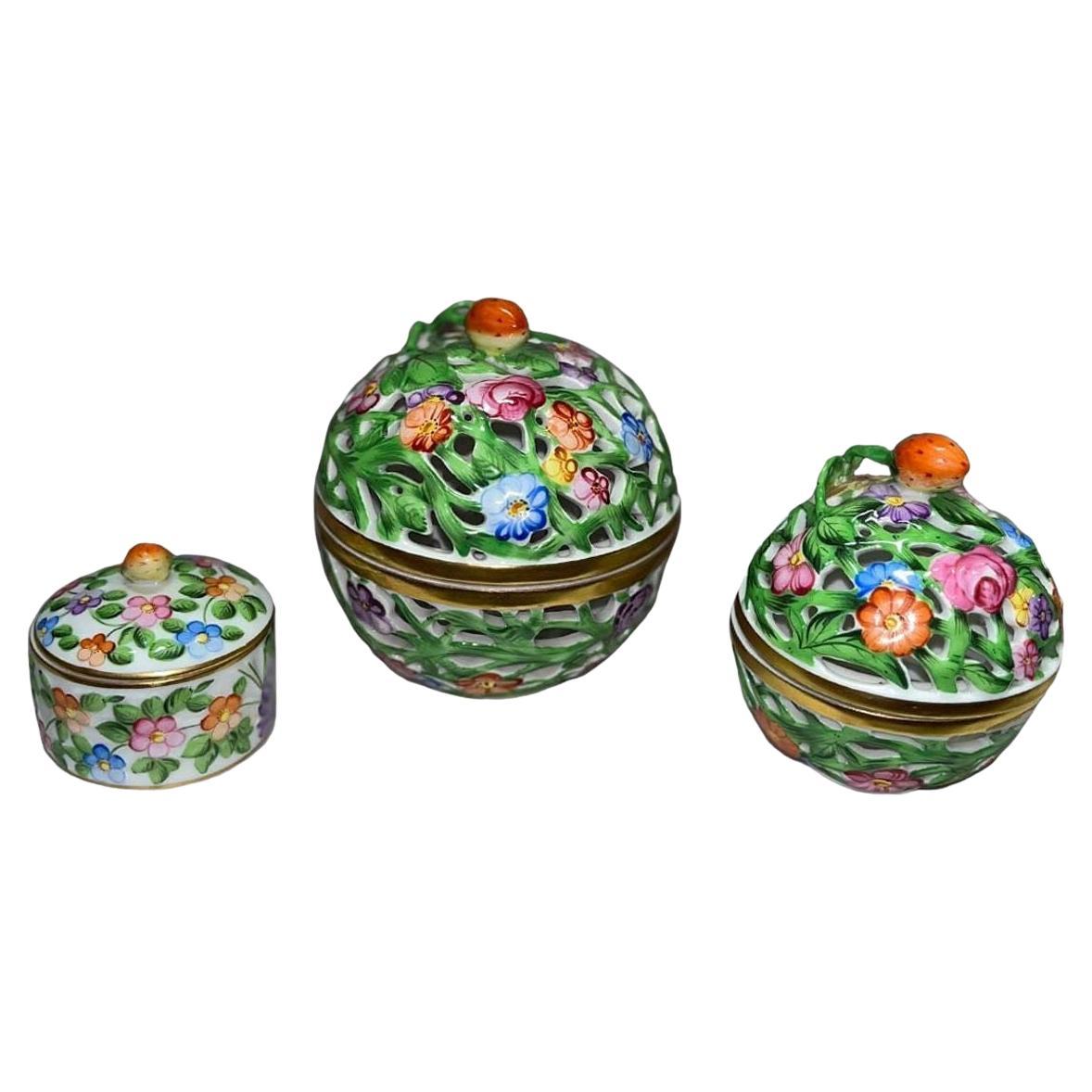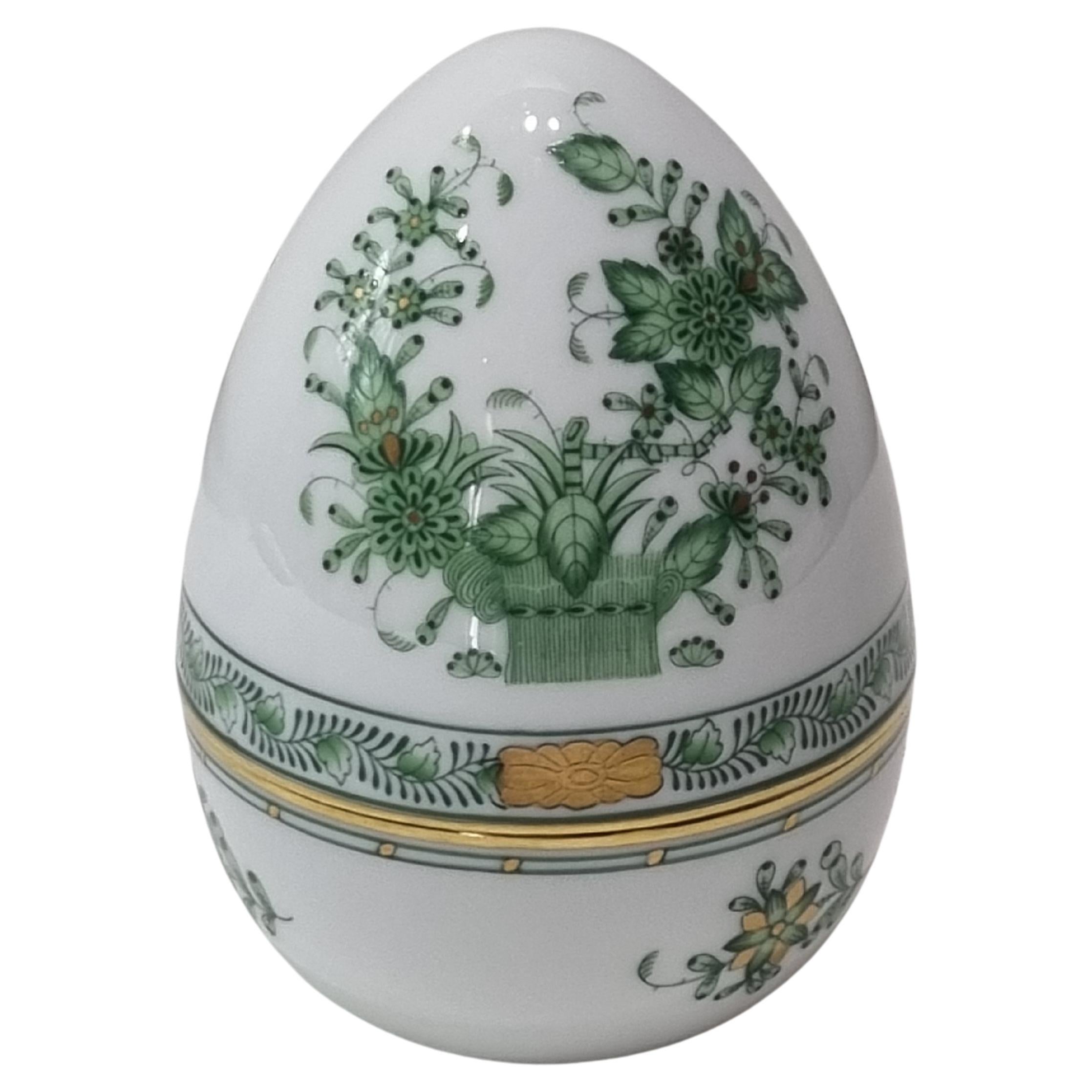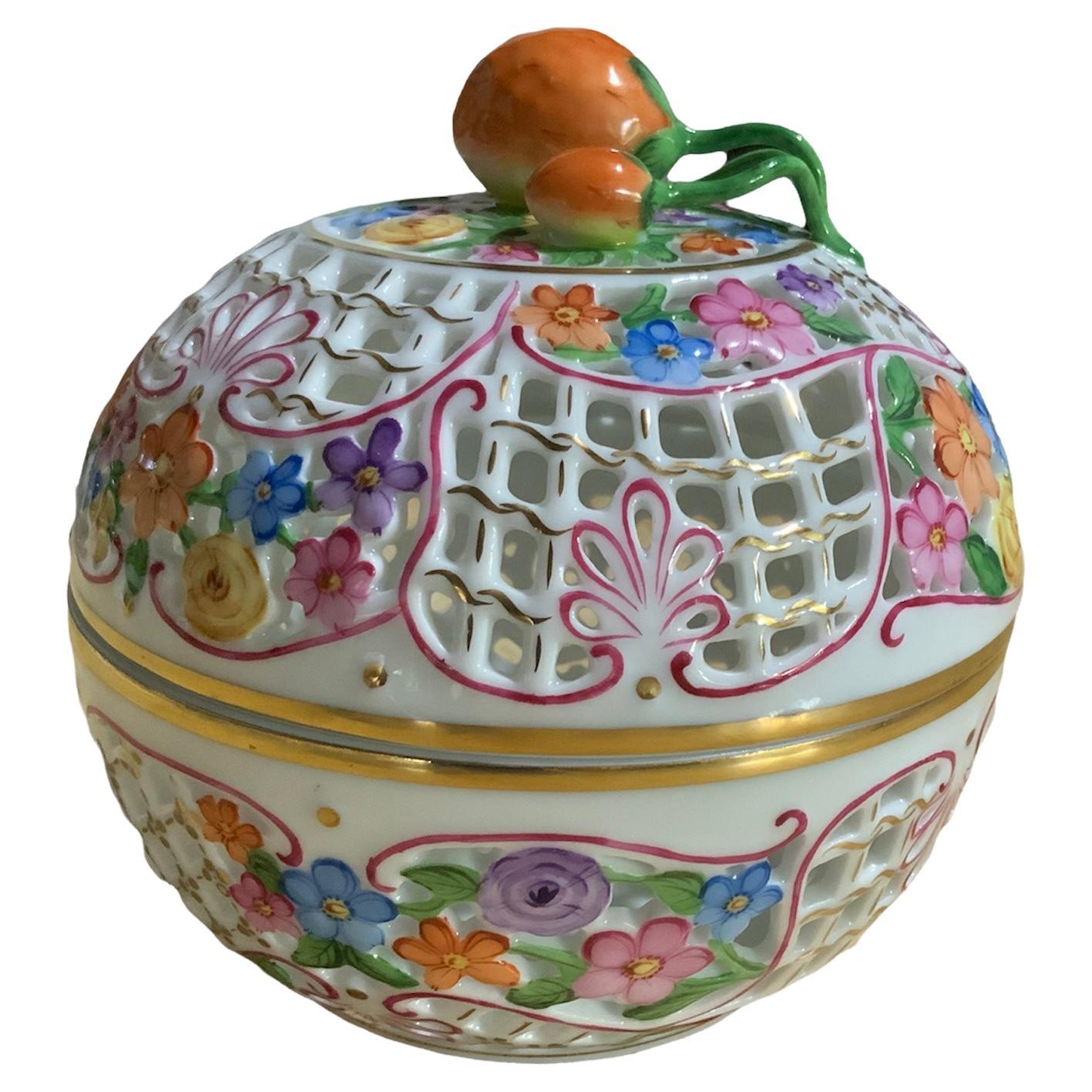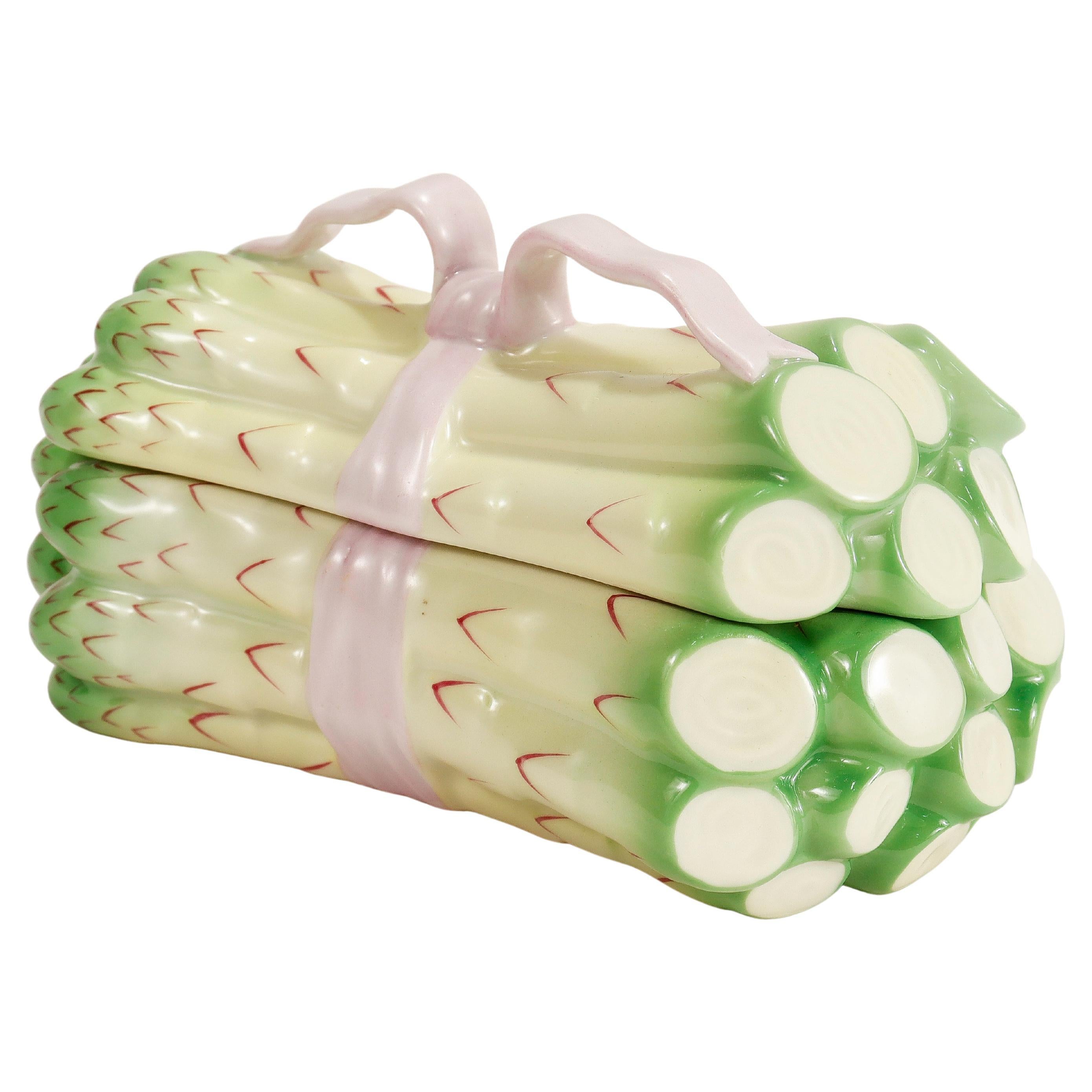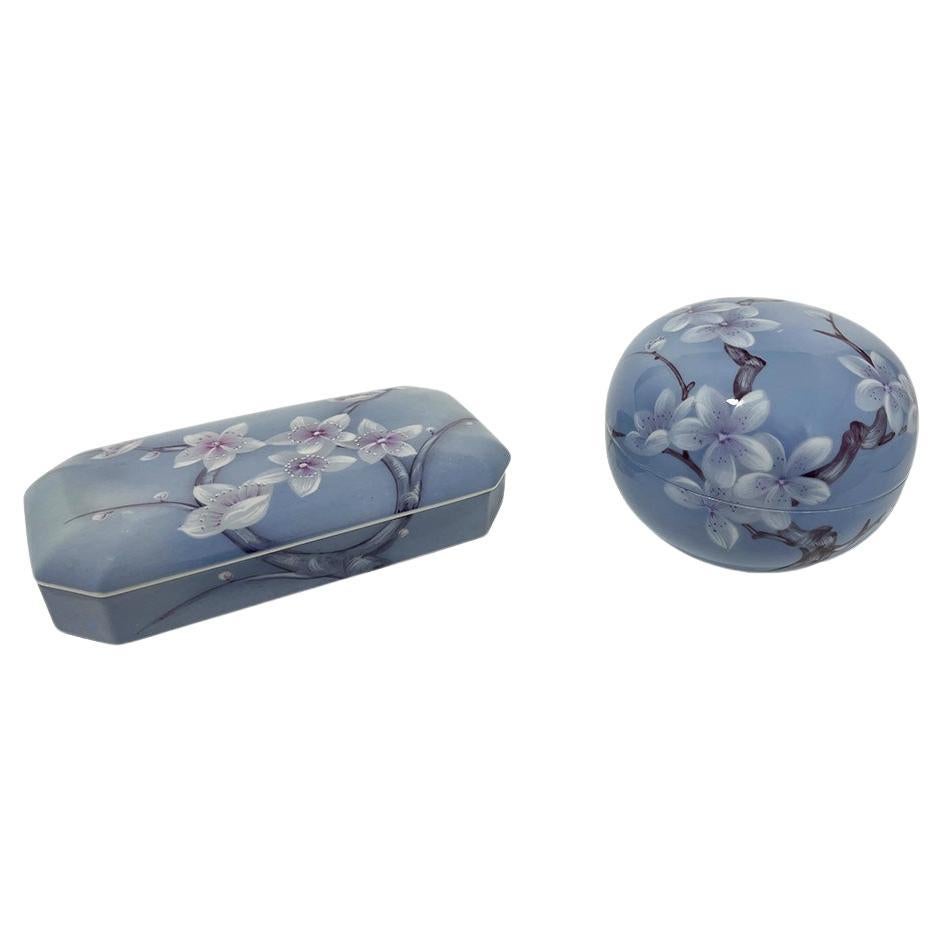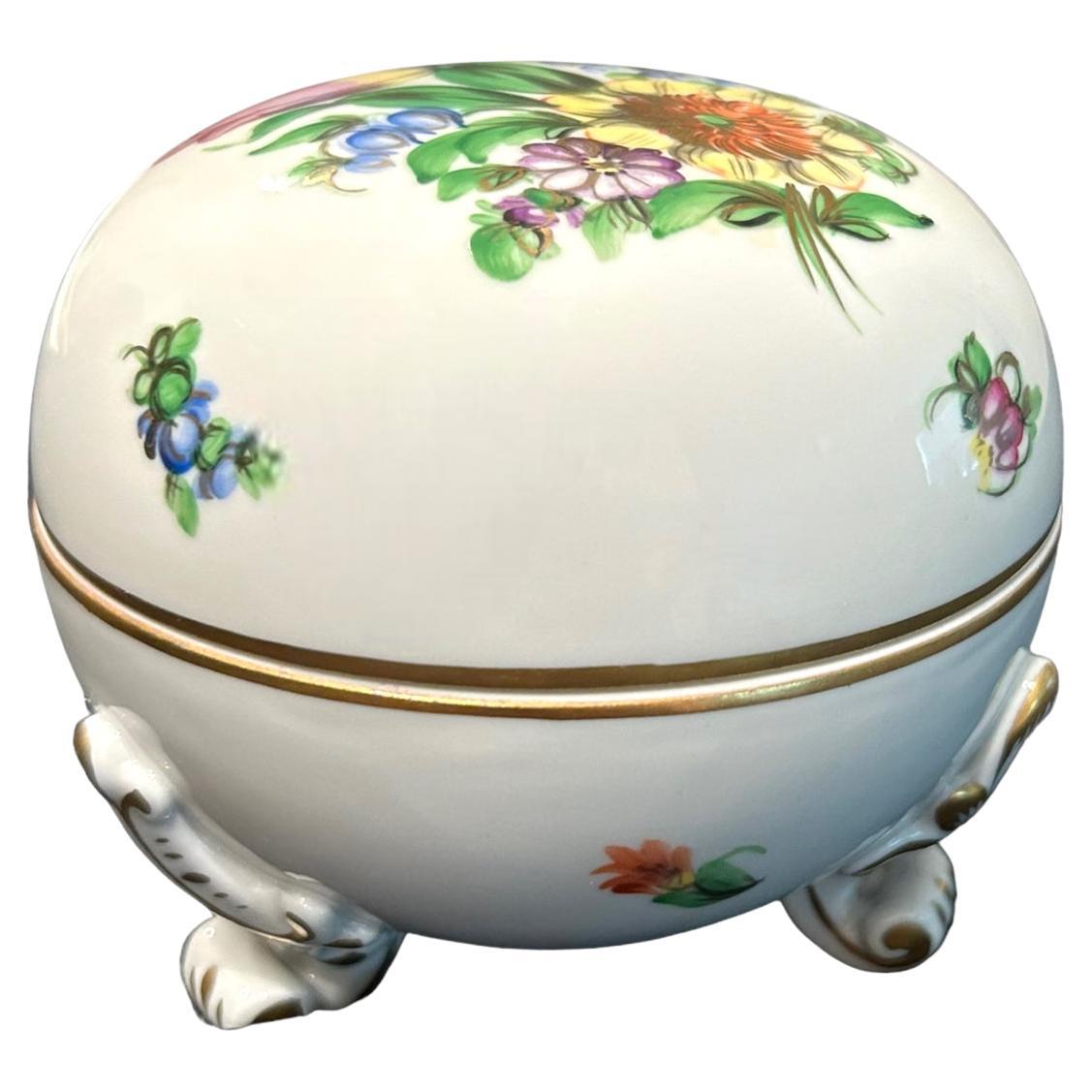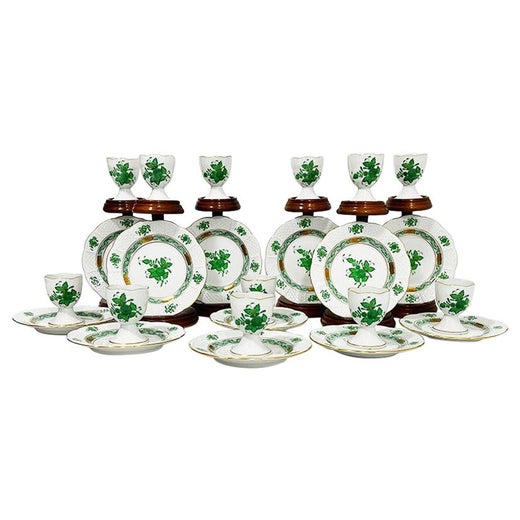Herend Porcelain Egg-Shaped Jewelry Box
About the Item
- Creator:Herend (Maker)
- Dimensions:Height: 2 in (5.08 cm)Width: 2.88 in (7.32 cm)Depth: 2.13 in (5.42 cm)
- Materials and Techniques:
- Place of Origin:
- Period:
- Date of Manufacture:circa 20th Century
- Condition:Wear consistent with age and use. - Very Good condition as shown in images with no chips noted. - Jewelry for photo-op only, thank you.
- Seller Location:New York, NY
- Reference Number:1stDibs: LU1314217356842
Herend
Herend Porcelain occupies a singular place in the world of luxury European ceramics. The firm's distinctive patterns are visually striking, and notably different from those of other major porcelain producers like Meissen or Sèvres. Whereas the latter tend to feature discrete decorative elements that appear to float on a white ground, Herend favors large, bold designs incorporating historical scenes, animals or vegetation.
Vince Stingl established what would become the Herend Porcelain Manufactory in 1826 in the town of Herend, Hungary, to produce earthenware. When he went bankrupt in the late 1830s, Mór Fischer, who took over, switched the focus from earthenware to porcelain to take advantage of the growing European market for fine china. By 1849, Herend counted among its clients members of the Habsburg dynasty and the Hungarian aristocracy. Thanks to its participation in several important international exhibitions and fairs—including the 1851 Crystal Palace Exhibition in London, the 1853 Exhibition of the Industry of All Nations in New York and the 1855 Exposition Universelle in Paris—its wares became a popular choice for courtly dining in the middle of the 19th century, and its patrons included Francis Joseph I of Austria and Queen Victoria of England, for whom its Viktória pattern was named.
The company foundered in the latter half of the 19th century under the leadership of Fischer’s two sons. But it was given new life, artistically and financially, when Fischer’s grandson, Jenő Farkasházy, himself a trained ceramist, took the helm around 1900. Farkasházy designed new patterns and revived classic ones. After World War II, Herend was nationalized by the Communist government, but kept alive its tradition of skilled craftsmanship by continuing to produce its classic patterns. In 1993, after the fall of the Iron Curtain, the factory was privatized once again and today is owned by its management and workers.
Herend’s animal figurines, like this grouping of white rabbits, are often covered head to toe with the factory’s famed “fish-scale” pattern, also known as Vieux Herend, which produces the effect of a dense coat of feathers or fur. The fish-scale pattern also appears on this chocolate cup and saucer decorated in the Cornucopia pattern.
- ShippingRetrieving quote...Ships From: New York, NY
- Return PolicyThis item cannot be returned.
- Herend Porcelain Jewelry DishBy HerendLocated in New York, NYA very beautiful hand painted octagonal porcelain jewelry dish vide-poche from luxury maker Herend, circa 20th century, Hungary. Dish is octagonal with Queen Victoria design...Category
Late 20th Century Hungarian Decorative Dishes and Vide-Poche
MaterialsGold
- Herend Porcelain Jewelry DishBy HerendLocated in New York, NYA very beautiful hand-painted octagonal porcelain jewelry dish vide-poche from luxury maker Herend, circa 20th century, Hungary. Dish is octagonal wi...Category
Late 20th Century Hungarian Decorative Dishes and Vide-Poche
MaterialsGold
- Butterfly Porcelain Jewelry BoxLocated in New York, NYA beautiful small white porcelain oval jewelry or trinket box with colorful butterfly, leaves and cherries, circa mid to late-20th century. Piece has a raised butterfly knob...Category
Mid-20th Century European Jewelry Boxes
MaterialsPorcelain
- French Porcelain Jewelry BoxLocated in New York, NYA French porcelain jewelry box with flower and leaf design and touch of gold detail, circa mid-20th century, France. A great piece for any vani...Category
Mid-20th Century French Jewelry Boxes
MaterialsPorcelain
- English Porcelain Jewelry BoxBy Royal Crown Derby PorcelainLocated in New York, NYA beautiful authentic English fine bone chine porcelain box in the 'Old Imari' pattern, by Royal Crown Derby, circa late-20th century, England. Piece is hand-painted in 22kt gold. Box has a 'hexagon' shape which is a nice alternative to round. A great piece for smaller items of jewelry (as demonstrated with cocktail ring and earrings.) Colors include a white fine bone china base, blue, dark orange hues, and 22kt gold. All authentication marks on bottom as shown in last three images. Made in England. A great piece for a vanity, dresser, nightstand table, desk, as a gift, etc. For porcelain butterfly...Category
Late 20th Century English Decorative Boxes
MaterialsPorcelain
- French Flower Garden Box Limoges Porcelain Jewelry BoxLocated in New York, NYA beautiful French porcelain hand-painted 'flower garden box' decorative or jewelry box, with gold gilt brass hinge closure, circa mid-20th century, Limoges, France. A beautiful porc...Category
Mid-20th Century French Decorative Boxes
MaterialsBrass
- Herend Hungary Porcelain Box SetBy HerendLocated in Los Angeles, CAHerend Hungary porcelain box set. Consists of two "Openwork" boxes with flowered details and strawberry on top and one small round relief box. *each base...Category
Late 20th Century Hungarian Decorative Boxes
MaterialsPorcelain
- Herend "Fleurs des Indes" Green Hand Painted Porcelain Egg Box, Hungary, 2022By HerendLocated in Cagliari, ITAs its name implies, the decoration "Flowers of the Indies" intends to link up with the magical world of the indian subcontinent which had already fascinated the European courts sinc...Category
2010s Hungarian Victorian Porcelain
MaterialsPorcelain
- Herend Porcelain Reticulated Potpourri / Bombonniere Lidded BoxBy HerendLocated in Guaynabo, PRThis is a Herend Porcelain reticulated round lidded potpourri bombonniere box. It is hand painted with colorful flowers and pink ribbons scrolls. Its lid and bowl borders are gilded....Category
20th Century Hungarian Rococo Decorative Boxes
MaterialsPorcelain
- Herend Porcelain Figural Asparagus Covered Box Model No. 6070/CBy HerendLocated in Philadelphia, PAA fine figural porcelain covered box. By Herend. In the form of a bundle of asparagus tied together with a pink ribbon. Model No. 6070/C. Simply a wonderful piece of Here...Category
20th Century Hungarian Porcelain
MaterialsPorcelain
- A Herend Hungary porcelain lidded Oblong or Trinket box, 1950-1970By HerendLocated in Delft, NLA Herend Hungary porcelain lidded Trinket box, 1950-1970 A Herend porcelain lidded trinket box, painted by Eva Bakos, during 1950-1970 in Hungary. A light blue porcelain box with a ...Category
20th Century Hungarian Decorative Boxes
MaterialsPorcelain
- Vintage Herend Porcelain Hand Painted Floral Round Trinket Box w/ LidBy HerendLocated in Naples, FLThis vintage Herend porcelain floral trinket jewelry box is a true collector’s item. Its hand-painted design depicts a beautiful floral design, making it a unique addition to any co...Category
Mid-20th Century Hungarian Decorative Boxes
MaterialsPorcelain
